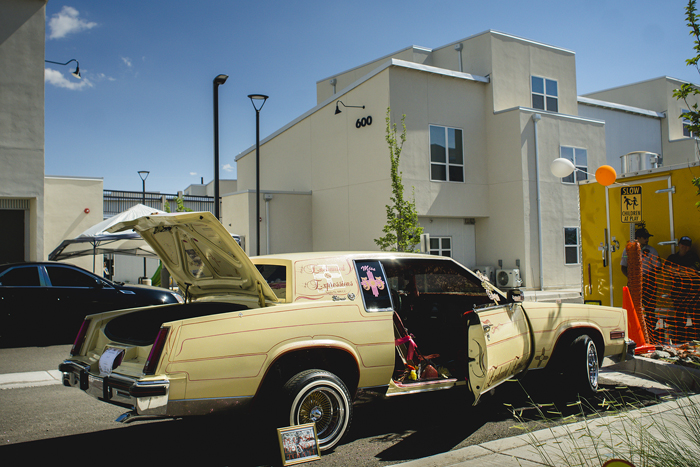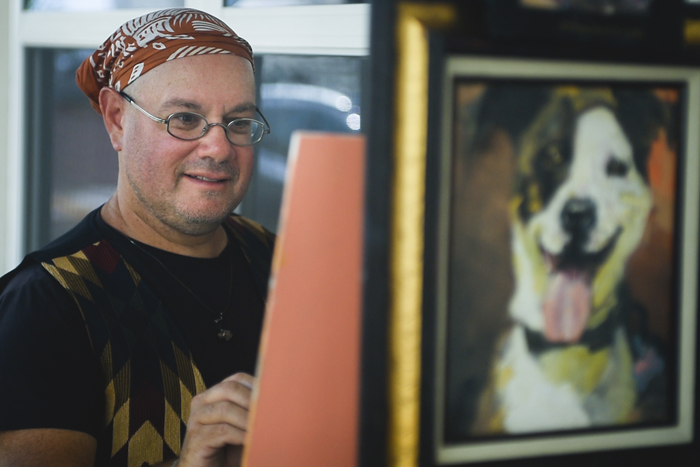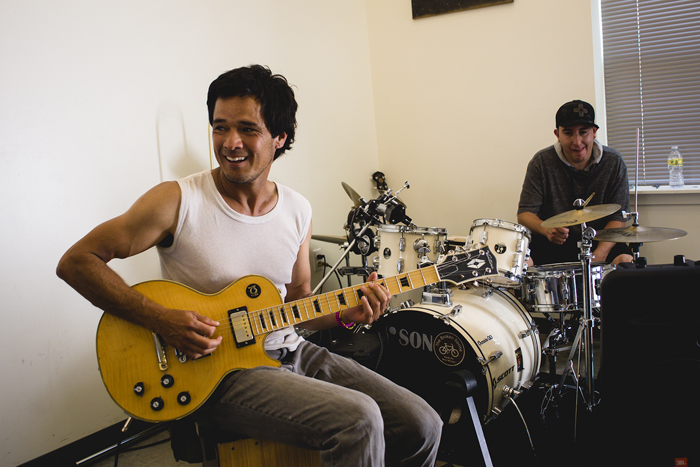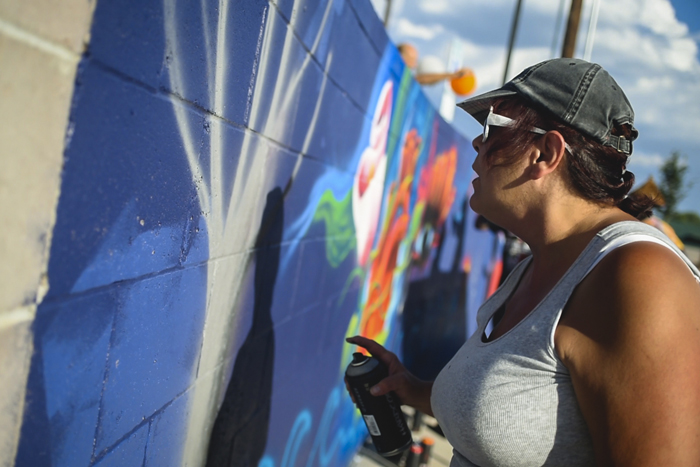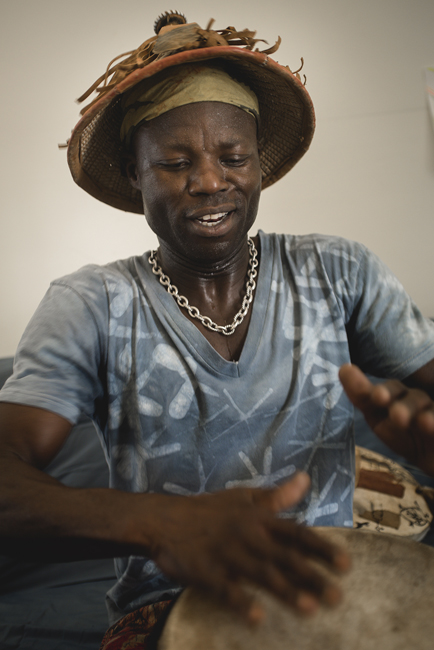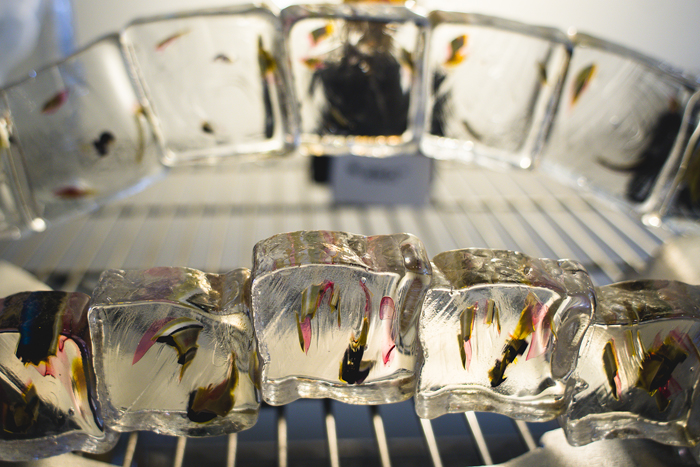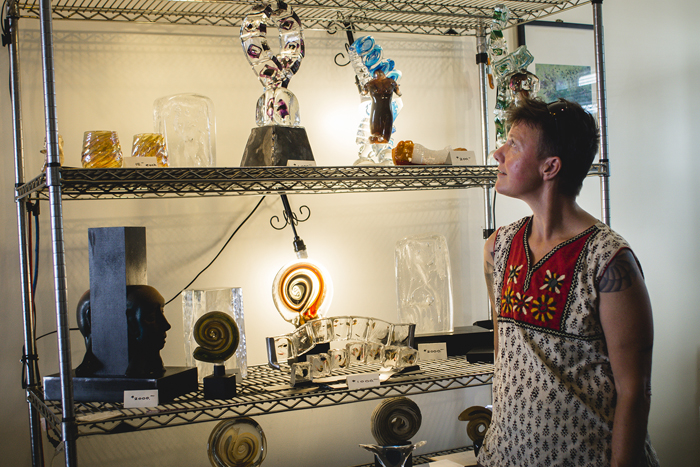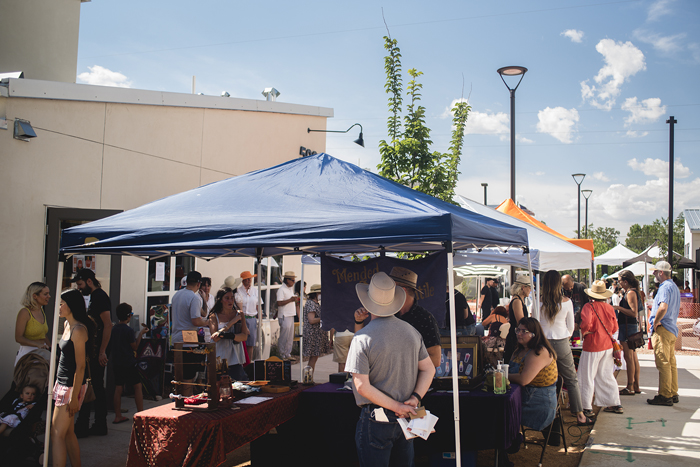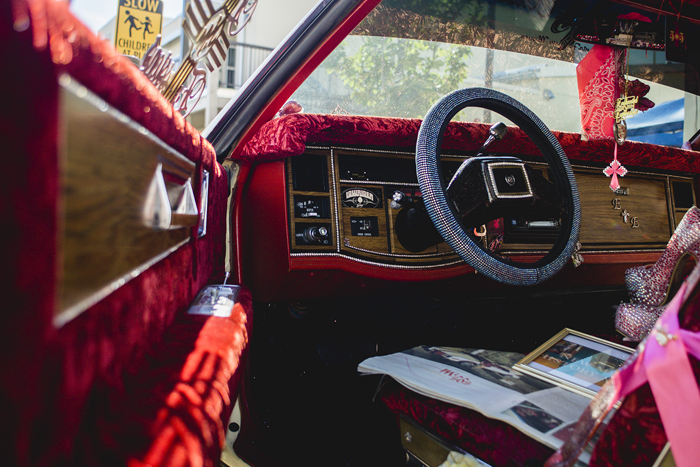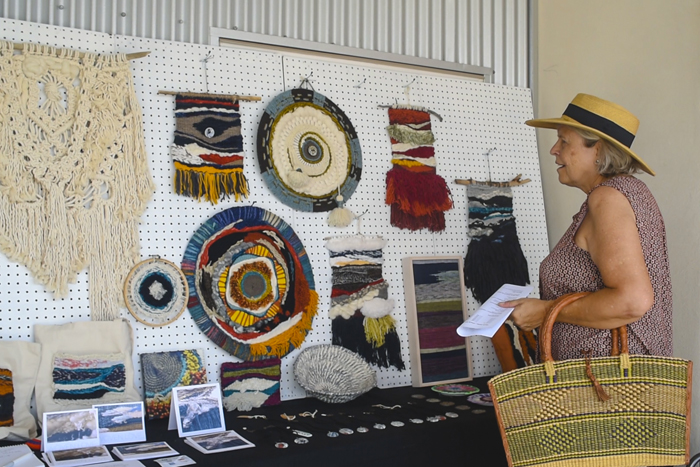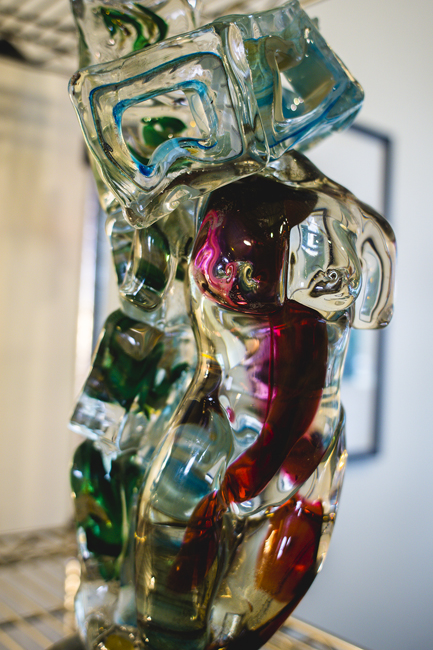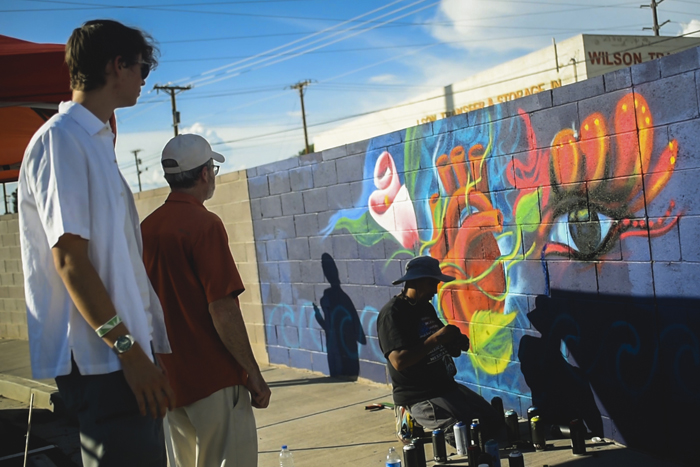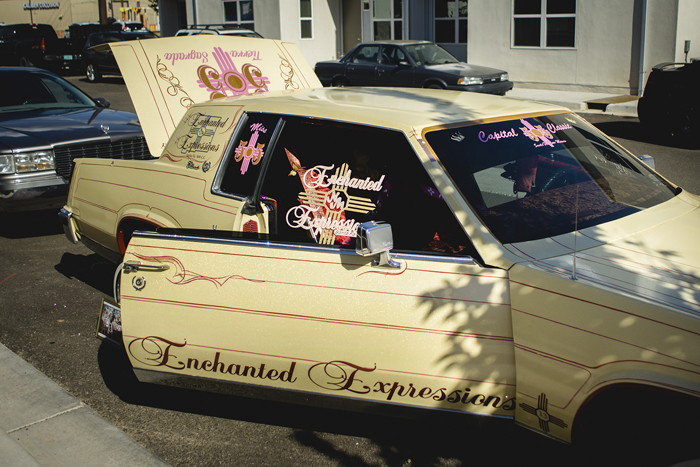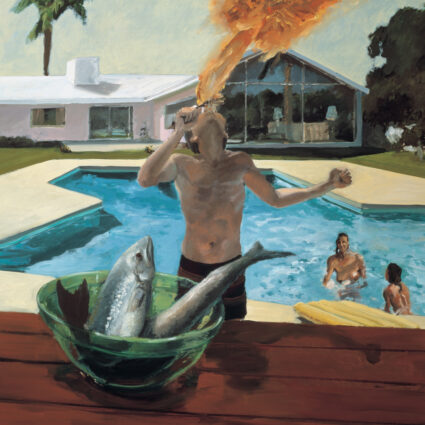Siler Yard fills a void in Santa Fe’s affordable housing crunch, especially for artists and long-standing residents. Though celebrated, the development faces challenges.

SANTA FE, NM—Sculptor and artist Bruce LaFountain (Turtle Mountain Chippewa) looks at a picture of himself, handsome with long flowing locks, on the cover of a magazine from the 1980s. “I got a lot of flak on that one from friends, calling me the ‘Indian Fabio,’” jokes LaFountain.
Since moving to Santa Fe at the age of twenty-one, LaFountain has seen his share of success and struggle, and says that he’s gone from being a multi-millionaire to living in a tent. At one point during his tumultuous journey, the Veterans Administration found LaFountain camping at Hyde Memorial State Park, located at the foot of the Santa Fe National Forest. The VA helped him attain housing at the newly opened Siler Yard, where he moved seven months ago.
“I like it. It’s quiet. Not a lot of riffraff,” he says of his residence that’s located near Meow Wolf, in the burgeoning Siler-Rufina urban arts corridor. “It’s a great place for me to start over.”
LaFountain is one of a handful of residents selling and showing artwork to attendees during an open house celebration at the approximately $19 million Siler Yard: Arts + Creativity Center, which began moving in residents seven months ago. The July 16, 2022 event marks the culmination of a decade of collaboration, planning, and building, resulting in a sixty-five-unit development of affordable live-work housing designed for artists and creatives. The multi-level complex, built on land donated by the City of Santa Fe, is boxy and industrial chic with sloping roofs and stucco and corrugated metal siding, blending right into its commercial neighborhood.
Santa Fe, like many other desirable cities and towns, is currently under siege from a lack of affordable housing, which adversely affects longstanding residents as well as the local creative community. According to a 2020 New Mexico Mortgage Finance Authority report, Santa Fe County is short 7,343 affordable rental units and only 48.2 percent of its renters can afford the average rent (compared to 49.4 percent for New Mexico overall).
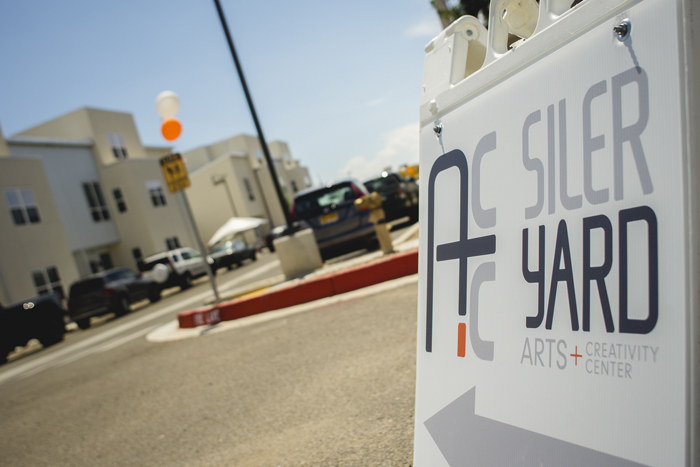
“Affordability is poor in Santa Fe, Taos, and Lincoln [where Ruidoso is located] counties due in part to a high percentage of housing stock that is used as vacation and second homes,” the report reads. “This situation creates supply problems for local residents.”
Though Siler Yard meets a critical need for affordable housing in a pricey city, some occupants report issues with the livability of the apartments. Noise levels in some of the units, which Siler Yard management says they are currently addressing, is reported by one resident as a constant stampede and greatly interferes with another resident’s creative practice.
Siler Yard was spearheaded by Creative Santa Fe, an organization born out of a 2004 University of New Mexico Bureau of Business and Economic Research study that looked into options to support and grow Santa Fe’s creative economy. Creative Santa Fe, which today focuses on catalyzing public-private partnerships, had largely been dormant until Cyndi Conn took over as director in 2011. Through the nonprofit, Conn saw the opportunity “to tackle some of the big projects in our city that no single organization of the city has the capacity to do alone,” says the now former director in a phone interview with Southwest Contemporary.
According to Conn, the idea of affordable housing for artists and creative individuals had been bandied about by the City of Santa Fe for about a decade before her team took on the challenge. They consulted with Artspace, a national organization that specializes in the development of affordable art spaces, and selected developer Daniel Werwath of New Mexico Inter-Faith Housing and AOS Architects to helm the project. A $10.5 million federal low-income housing tax credit in 2019 allowed the development to break ground.
At Siler Yard, qualifying applicants must earn less than 60 percent of the area’s median income—$37,178 for individuals and $57,274 per household, according to the 2020 United States census. Individuals and families pay a rental amount, ranging from $427 to $1,185 (utilities included), in accordance with their earnings and rental unit type. Priority is given to artists and creatives.
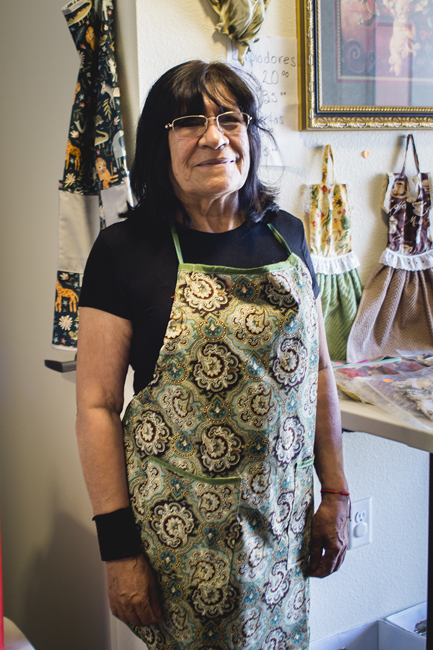
A year ago, Maria Ochoa, who has lived in Santa Fe since 1993, sustained an injury that left her unable to make a living working for a house cleaning service. Since moving to Siler Yard, she’s been able to earn some income by making crafts and selling them out of her apartment.
“I am very happy living here,” says Spanish-speaking Ochoa through her daughter Norma Gutierrez, serving as a translator. Ochoa is selling handcrafted aprons, tablecloths, hand towels, and homemade biscochitos in her studio during the open house.
Though Siler Yard has offered Ochoa new opportunities through affordable living, Werwath, in a phone interview, says that Santa Fe still faces overarching challenges. In his view, the city’s unhoused population—as well as the loss of creatives and deprivation of economic and cultural diversity—are underlying issues that need addressing.
“We’re losing hundreds of people a year,” says Werwath. “Six percent of the population of Santa Fe has left in the last two years, displaced by 7 percent new people, wealthier people, moving here.”
“It’s hard to explain how wild those statistics are,” he explains. “It’s ground shaking from a demographic point of view. And unfortunately, a lot of the people who are leaving are older multigenerational lower-income Hispanic families and creative lower-income young people. That’s who gets priced out.”
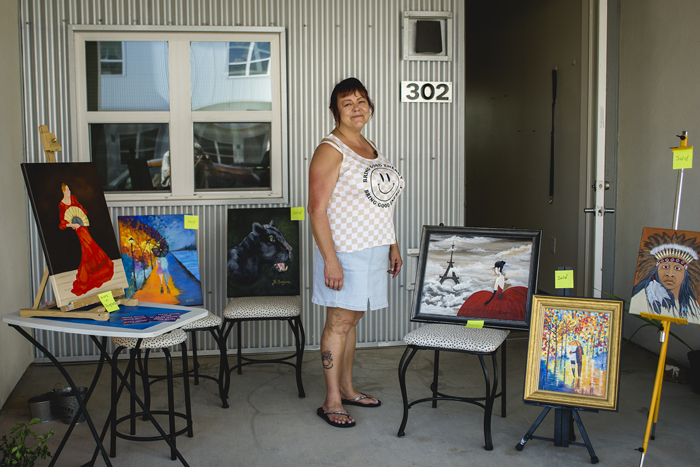
After losing her home, Barbie Segura reached out to Werwath prior to Siler Yard’s existence. Through patience and luck, the lifelong Santa Fe resident was among the first to move into the complex; she is also one of the artists showing her work on opening day. Though she has been painting for only four years, she shows off her artwork like a pro.
“It’s a positive community. People get together artistically, and it’s like coming home to a family,” says a teary-eyed Segura about her new home. “It’s comfortable here. It’s quiet. I feel safe. It’s just beautiful. I love it.”
But other residents have reported different experiences, particularly around the lack of quiet in the units.
“The apartments are ridiculously noisy… I can barely write in my apartment,” says Darryl Lorenzo Wellington, a poet, writer, journalist, and current Santa Fe poet laureate. “It’s like hammers going down on you from upstairs if you’re downstairs,” adds Wellington, who has lived at Siler Yard since December 2021.
“The apartments themselves are beautiful, except that they didn’t soundproof them,” says another Siler Yard resident who spoke to Southwest Contemporary on the condition of anonymity. “It’s like a herd of wild bison is moving through my apartment constantly.”
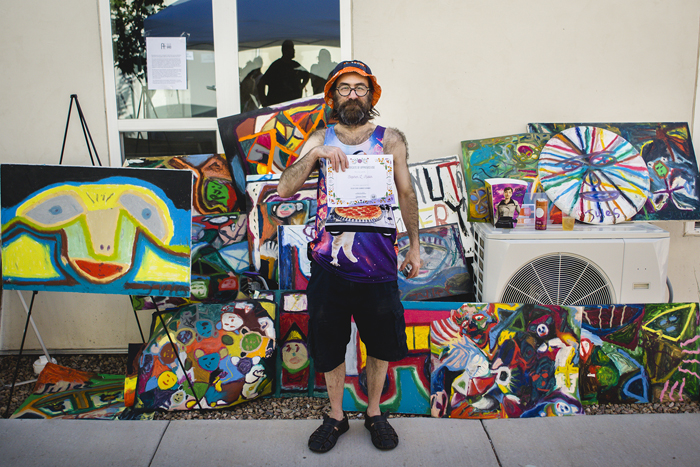
In response to resident complaints, Siler Yard owners say that they recently purchased and started distributing area rugs to residents to help absorb some of the noise.
“We designed the units to exceed code requirements for noise insulation, and that included extra sound batting and gypcrete [a concrete often used for sound reduction] floors as well as staggered stud walls,” explains Werwath. “That seems to work really well for most radiating noise… but it seems like there is contact noise from the upstairs floors to the downstairs.”
Throughout the planning stages, local artists from a variety of disciplines sat down with architects to offer their ideas on the design process. Community input and outreach were largely made possible by a $150,000 matching grant from the National Endowment for the Arts. “So it wasn’t just some affordable housing projects down the middle of the city. It was really a ground-up community-based project,” says Conn, founder and president of local arts consulting firm LaunchProjects, who left Creative Santa Fe in 2020.
The apartments, which Siler Yard officials say were designed from the outset with artists and creatives in mind, deviate from the conventional affordable housing model. All units receive both north and south light and feature concrete floors, plywood back walls, and high ceilings with exposed pipework.
The development is also distinct for its net-zero energy model, which means the complex’s entire energy consumption is offset by solar electricity. Power generation from the 237-kilowatt solar installation system “saves around 30,000 pounds of coal consumption monthly,” according to Siler Yard’s website.
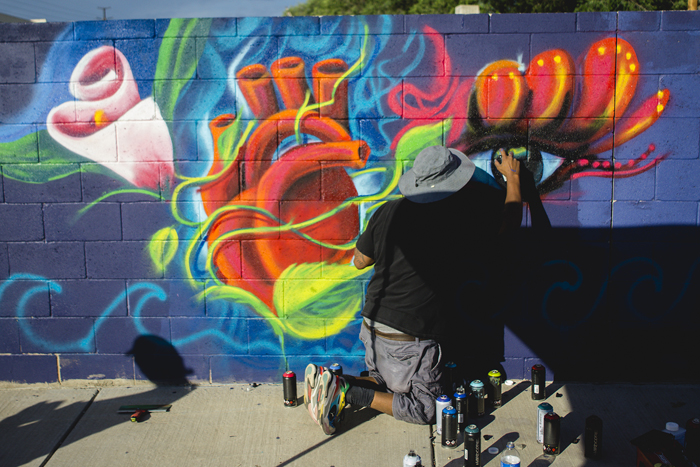
Werwath says this is the first multi-family structure of its kind in New Mexico, and that the non-conventional nature of the project “made it more expensive.” As of early August, Siler Yard cost $18,936,229 to build; Werwath adds that the price tag will likely top $19 million when all of the loose ends are tied up later this month.
“The other big thing that we learned from the community input process is that a lot of the creative people and artists in our community have families… and so there was a huge desire for family accommodations,” says Werwath, who adds that forty-one children under the age of eighteen were housed at Siler Yard as of July 2022. To accommodate families, the complex offers one-, two-, and three-bedroom units and a centralized playground and basketball court.
John Paul Granillo, a local artist who contributed to the development’s planning stages, looks forward to the next step, which he calls the business phase, which will include workshops and classes for Siler Yard residents. For him, the project is about “creating space where these individuals can get together as a collective and create a community in Santa Fe that we’re trying to continuously seed. This is the first generation of that,” he says.
Back at the opening day event, project architects, collaborators, and community members walk around and survey the grounds of the sleek new development. Stringed balloons wave feebly in the July afternoon heat, while potent air conditioning inside the artists’ open studios offers a refreshing relief.
This will likely be the first of many events for Siler Yard, since strengthening community ties seems crucial to the next phase of the ambitious project.

“We’re finally getting out of the crazy pandemic development process,” Werwath says, “and starting to be able to focus on community building.”
Before moving to Siler Yard, LaFountain—a stone sculptor who has displayed his work locally at Blue Rain Gallery, Adobe Gallery, and True West Gallery—wondered how much work he would actually be able to achieve at Siler Yard because he has specific requirements for an artist’s workspace. He’s hopeful that the large community makerspace, planned to be built just steps from his unit, will provide ample room so that he won’t disturb his neighbors with noise and dust.
“I’ll make it work,” he says.
